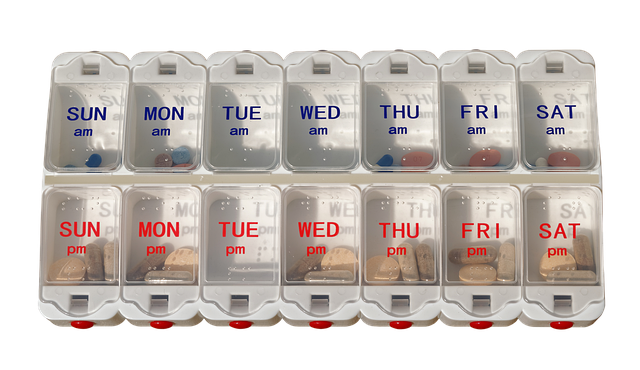TL;DR:
When getting prescribed semaglutide for type 2 diabetes management:
– Understand Drug Interactions: Semaglutide can interfere with other medications, supplements, and even foods. Inform your healthcare provider about all current drugs to avoid altered effectiveness or increased side effects.
– Be Aware of Side Effects: Know potential side effects like nausea, diarrhea, and the need for regular monitoring. Report any unusual or persistent symptoms.
– Disclose All Medications: Provide a complete list of current medications, supplements, and vitamins. Use online resources or consult a pharmacist to check for interactions.
– Regularly Review Medication List: Update your list regularly, especially with new health issues or medication changes.
– Consult Experts for Complex Cases: For complex drug regimens, consider advice from a pharmacologist or specialist to optimize treatment.
– Manage Existing Health Conditions: Pay close attention to interactions with other medications and conditions like kidney problems or thyroid disorders. Regular monitoring is crucial for optimal health management.
Before getting prescribed semaglutide, understanding potential drug interactions is crucial. This hormone-like medication offers significant benefits for diabetes management, but its effectiveness can be affected by other substances you might take. In this guide, we’ll explore common drug interactions with semaglutide, side effects to monitor, and essential steps to cross-check interactions. By staying informed, you can ensure safe and optimal use of semaglutide alongside your existing medications.
Understanding Drug Interactions: A Basic Overview

When you’re getting prescribed semaglutide or any other medication, it’s crucial to be aware of potential drug interactions. These occur when a substance in one medicine affects how your body processes another. Since semaglutide is a glucagon-like peptide-1 (GLP-1) receptor agonist used for type 2 diabetes management, understanding its interactions with other drugs is essential. For instance, it might interfere with the absorption or metabolism of certain medications, leading to altered effectiveness or increased side effects.
Over-the-counter medicines, supplements, and even certain foods can also play a role in these interactions. Always inform your healthcare provider about all the medications and substances you’re using, as they can guide you on safe dosing adjustments or alternative treatments if necessary. Regularly reviewing your medication regimen with your doctor is a proactive step towards ensuring safe and effective treatment when taking semaglutide.
Prescribed Semaglutide: What You Need to Know

When you’re first getting prescribed semaglutide, it’s crucial to understand its role and potential side effects. Semaglutide is a medication often prescribed for type 2 diabetes, helping to regulate blood sugar levels by mimicking a natural hormone that slows down digestion. This can lead to reduced hunger and increased feelings of fullness, aiding in weight management. However, as with any drug, it’s important to be aware of potential interactions.
Your healthcare provider should discuss the benefits and risks, including gastrointestinal side effects like nausea or diarrhea, and the need for regular monitoring. They’ll also want to know about any other medications you’re taking, as semaglutide can interact with certain drugs. Getting prescribed semaglutide requires open communication about your medical history and current medications to ensure safe and effective treatment.
Common Medications That Interact with Semaglutide

When getting prescribed semaglutide, it’s crucial to be aware of potential drug interactions. This medication, often used for type 2 diabetes management, can have significant effects when combined with certain other drugs. Some common medications that interact with semaglutide include metformin, insulin, and other glucagon-like peptide-1 (GLP-1) receptor agonists. Understanding these interactions is essential to ensure the safety and efficacy of your treatment.
For instance, combining semaglutide with metformin is generally well-tolerated, but healthcare providers should monitor for potential side effects like nausea and vomiting. Insulin therapy may also require adjustments when taking semaglutide, as both medications can influence blood sugar levels. Additionally, other GLP-1 receptor agonists can enhance the effects of semaglutide, which could lead to a higher risk of hypoglycemia (low blood sugar). Therefore, it’s vital to disclose all medications you’re currently taking to your healthcare provider to prevent adverse reactions.
Monitoring for Potential Side Effects

When a patient gets prescribed semaglutide, monitoring for potential side effects is an essential step in ensuring safe and effective treatment. This medication, often used to manage type 2 diabetes, can cause various adverse reactions, some of which may be more severe than others. Common side effects include nausea, vomiting, diarrhea, constipation, and abdominal pain—these are typically mild and subside over time. However, it’s crucial to keep an eye on any unusual or persistent symptoms, as these could indicate a more serious interaction or side effect.
Healthcare providers should encourage patients to report any new or worsening symptoms, especially those related to the gastrointestinal system or other organ systems. Regular follow-ups and laboratory tests can help in early detection of potential issues, enabling prompt intervention if necessary. This proactive approach is vital, as managing diabetes effectively while minimizing the impact of side effects requires continuous monitoring and adjustments to the treatment plan.
Steps to Cross-Check Drug Interactions

When getting prescribed semaglutide or any other medication, it’s crucial to take proactive steps in cross-checking potential drug interactions. Start by ensuring your healthcare provider has access to a complete list of all medications, supplements, and vitamins you’re currently taking. This includes over-the-counter drugs and herbal remedies, as even these can interact with semaglutide.
Next, use reliable online resources or consult your pharmacist to verify any potential interactions. Tools like drug interaction checkers can help identify risks by considering factors like medication type, dosage, and individual health conditions. Regularly reviewing and updating your medication list is key to maintaining safety, especially if you develop new health issues or start taking other medications.
When to Seek Professional Advice

If you’re considering getting prescribed semaglutide or any other medication, it’s crucial to be aware of potential drug interactions. While many primary care physicians can provide valuable guidance, complex pharmaceutical interactions may require the expertise of a pharmacologist or specialist. Seek professional advice if you have multiple prescriptions, take over-the-counter medications or supplements, or have pre-existing health conditions. These factors can significantly impact how your body processes and responds to different drugs.
Additionally, consult a healthcare provider if you’re unsure about the safety or efficacy of combining certain medications. They can help assess risks, suggest alternatives, and ensure that your treatment plan is optimized for your well-being, especially when introducing new prescriptions like semaglutide into your routine.
Managing Existing Health Conditions While Taking Semaglutide

When getting prescribed semaglutide, managing existing health conditions is crucial for ensuring safe and effective treatment. Semaglutide, a medication often used to manage type 2 diabetes, can interact with other drugs or medical conditions. For instance, those with kidney problems or thyroid disorders need special consideration as semaglutide can affect their medications or be affected by these conditions. Additionally, individuals taking other diabetes medications should consult their doctor to prevent potential interactions that may lead to serious side effects.
Regular monitoring is essential for patients on semaglutide, especially those with cardiovascular issues or a history of pancreatitis. The medication’s impact on blood sugar levels and weight can be significant, so close observation and adjustments to the dosage or accompanying treatments might be necessary. Open communication with healthcare providers about any concerns or symptoms during treatment with semaglutide is vital for optimal health management.
Keeping Track of All Medications

When considering taking a new medication, such as getting prescribed semaglutide, it’s crucial to maintain an accurate list of all current medications and supplements. This includes over-the-counter drugs, vitamins, minerals, and herbal remedies. Cross-checking potential drug interactions is essential, especially when introducing a new pharmaceutical into your routine. A simple, organized record-keeping system can help healthcare providers assess these interactions effectively.
Keeping track allows for a holistic view of your medication regimen. It enables doctors to identify any harmful or beneficial effects that may arise from mixing different substances. By providing a comprehensive list to your pharmacist or doctor, they can thoroughly review and offer valuable insights, ensuring the safe and effective use of semaglutide or any other prescribed medication.
Staying Informed: Resources and Tools

Staying up-to-date with potential drug interactions is crucial, especially when getting prescribed semaglutide or any other medication. Fortunately, numerous resources and tools are readily available to aid in this process. Online databases like Lexi-COMP and MedlinePlus provide comprehensive information on drug interactions, including rare cases, making them valuable references for both patients and healthcare providers.
Additionally, the US Food and Drug Administration (FDA) offers a user-friendly website with detailed guidelines and alerts regarding medication safety. Apps designed for tracking prescriptions can also notify users of potential interactions by cross-referencing their medications with vast pharmacological databases. These modern solutions ensure that individuals receiving prescribed semaglutide or any other drug regimen can make informed decisions, enhancing overall safety and efficacy.
